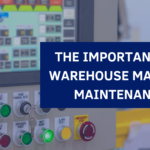The pallet has become a crucial component of today’s supply chain. Its invention in the early 1900s revolutionized the way products are stored and transported. Before the introduction of pallets, merchandise was transported using various methods such as wooden crates, barrels, kegs, and boxes. Another popular mode of transportation was the “skid,” which has been traced back to ancient Egyptian times.
Some argue that the pallet is an improved version of the skid. The development of the forklift truck in 1915 further increased the use of pallets. Pallets were even utilized in rail shipping during the 1920s and played a vital role in the U.S. Military’s logistics strategy during World War II.
A significant advancement occurred in 1945 with the emergence of the first four-way pallet. This new version allowed for easy handling from any side using motorized equipment like forklifts or pallet trucks.
Today, pallets are ubiquitous in the global supply chain. They are extensively used in warehouses for shipping and receiving operations, play a crucial role in transportation, and can be seen in retail displays of major stores like Walmart, Costco, and Home Depot.
While today’s pallets may resemble their counterparts from the 1900s, modern warehouse managers and manufacturers now have a wider range of options. Wooden, plastic, aluminum, and steel pallets are all available to meet the diverse needs of the supply chain.
Choosing the best pallet type depends on your specific requirements. Wood pallets have limitations, especially in industries like pharmaceuticals and baked goods. Plastic and aluminum pallets often prove more suitable for today’s warehouse and supply chain needs.
To help you make an informed decision, let’s examine the pros and cons of each pallet type. However, before we delve into that, there are a few initial observations worth noting.
It’s crucial that the pallets you purchase are compatible with your existing equipment and environment. They should be uniform and consistent in size to meet the requirements of your supply chain, conveyors, or automation systems.
Consider the anticipated lifespan of the pallets. How long do you expect them to last?
Due diligence is essential. Don’t rely solely on pictures or catalog descriptions. If you deal with valuable cargo, it’s important to conduct thorough research and testing.
Try before you buy! Request sample pallets from distributors and put them to the test in your environment. How do they perform?
From a practical standpoint, evaluate how the pallets will stack and rack in your warehouse. Are they easy to handle and transport? Can you clean, sanitize, and dry them effectively?
Remember, pallets are a critical part of your quality control. Some customers even ship their preferred pallets to suppliers because they know they work well in their specific environments. Find out what works best for your customers and suppliers’ needs.
To sum up, choosing the right pallets requires strategic decision-making and thorough research. If you have any questions, don’t hesitate to consult an industry expert.
Stay tuned for part 2 of Pallets 101 coming soon.
Don’t forget to sign up for our monthly newsletter here.



